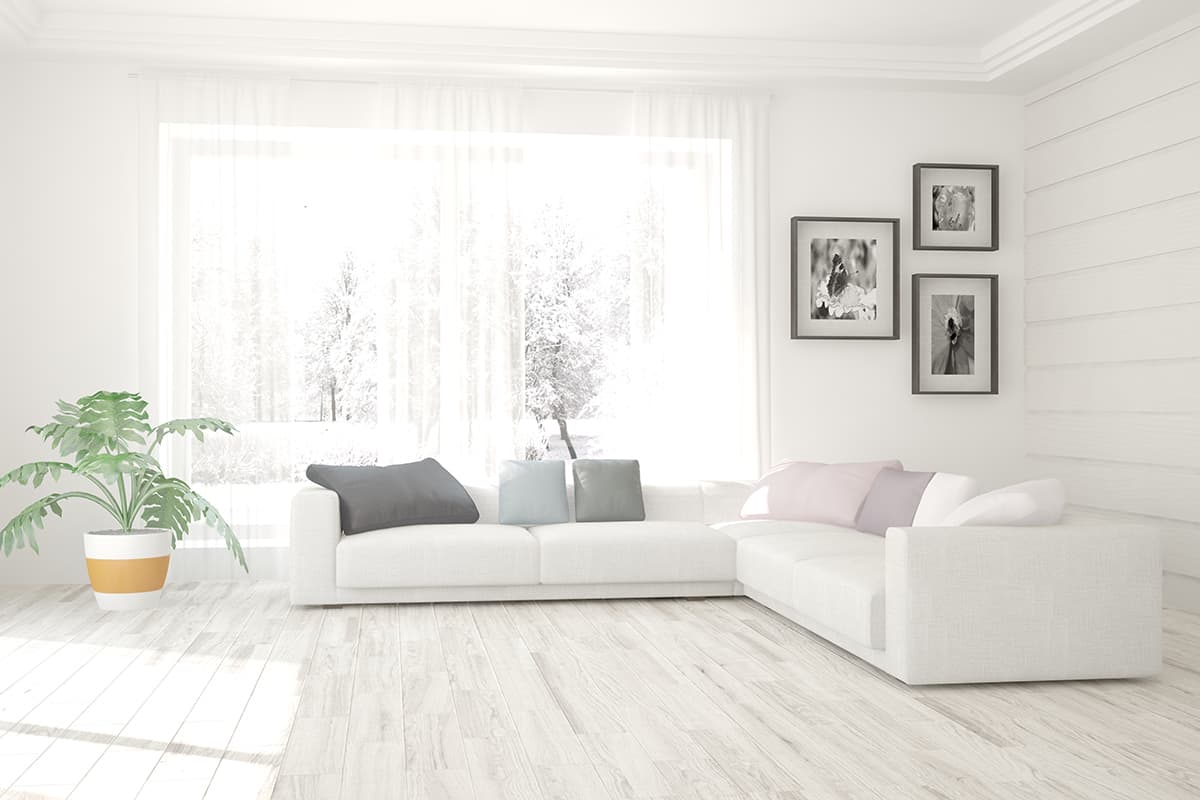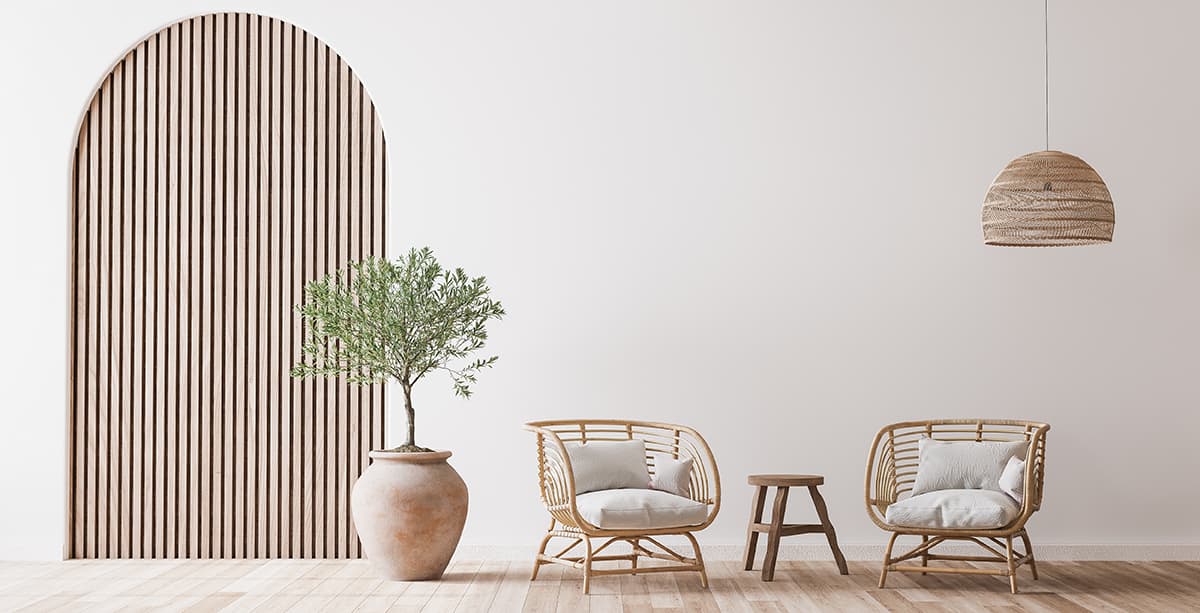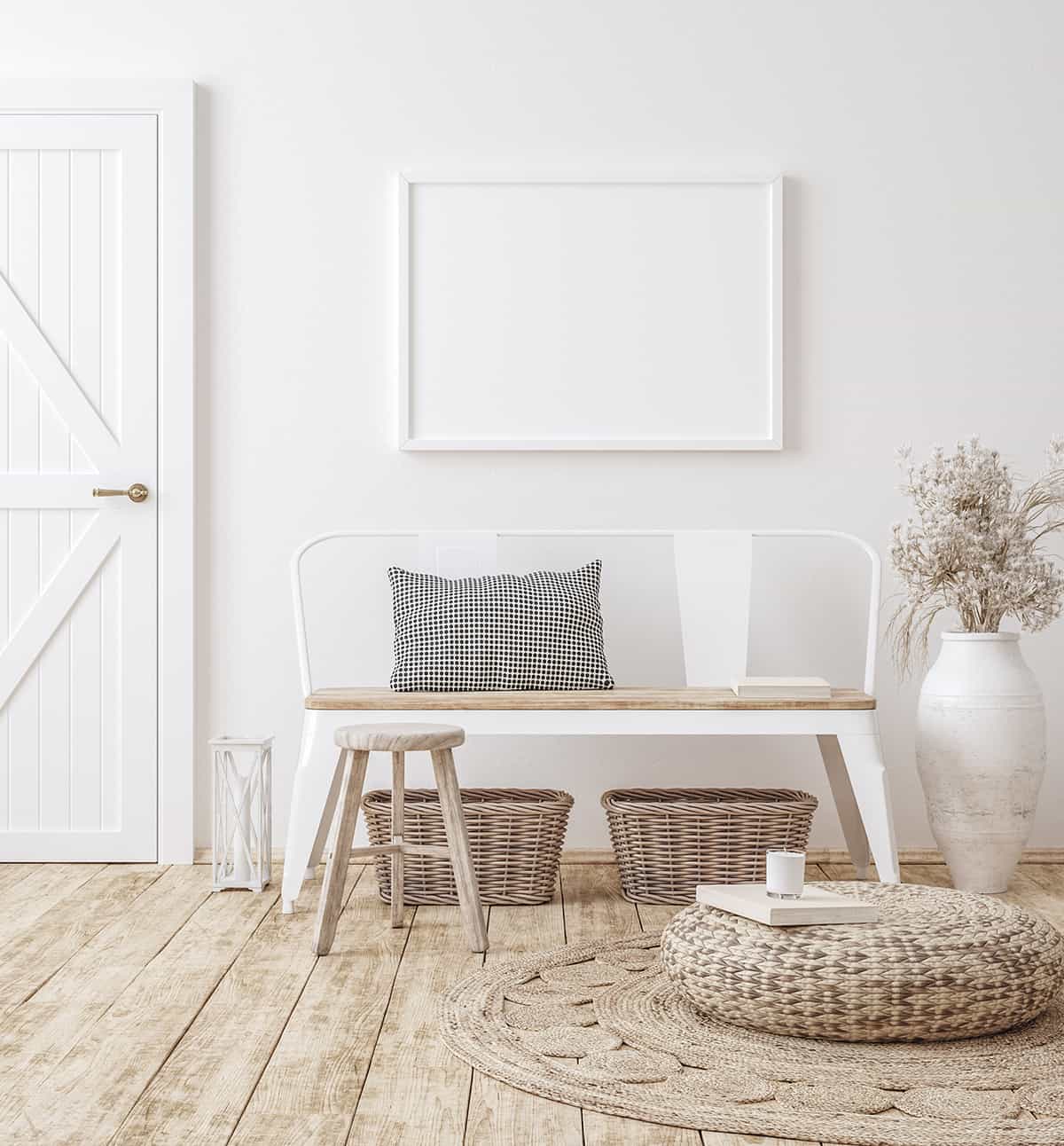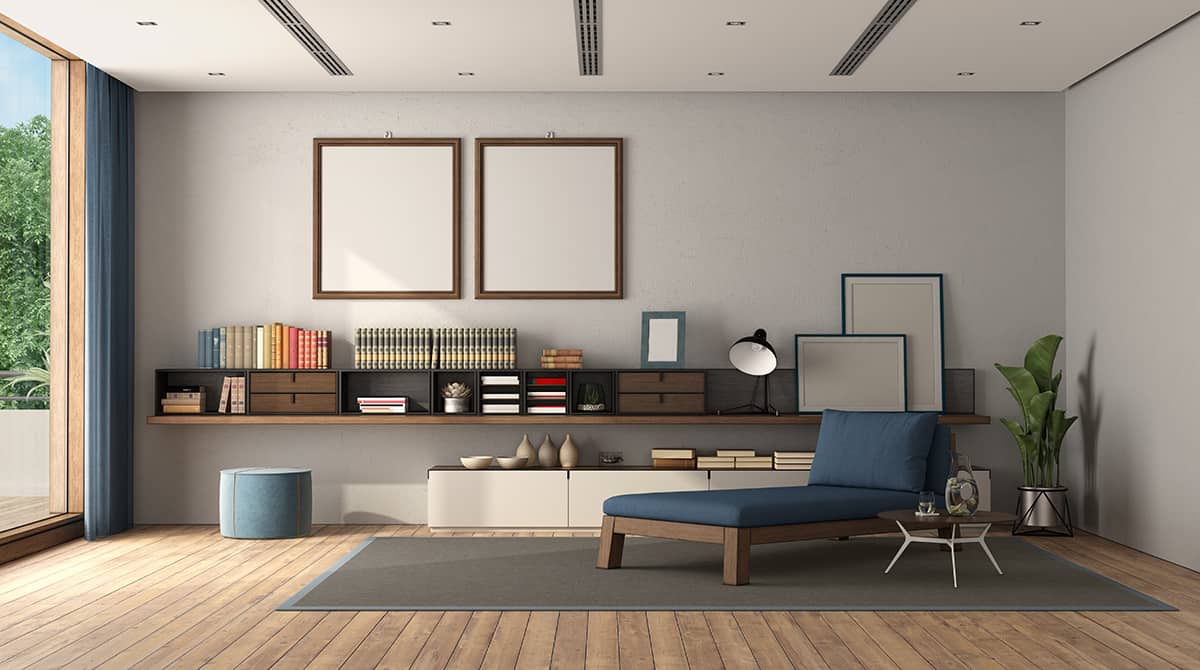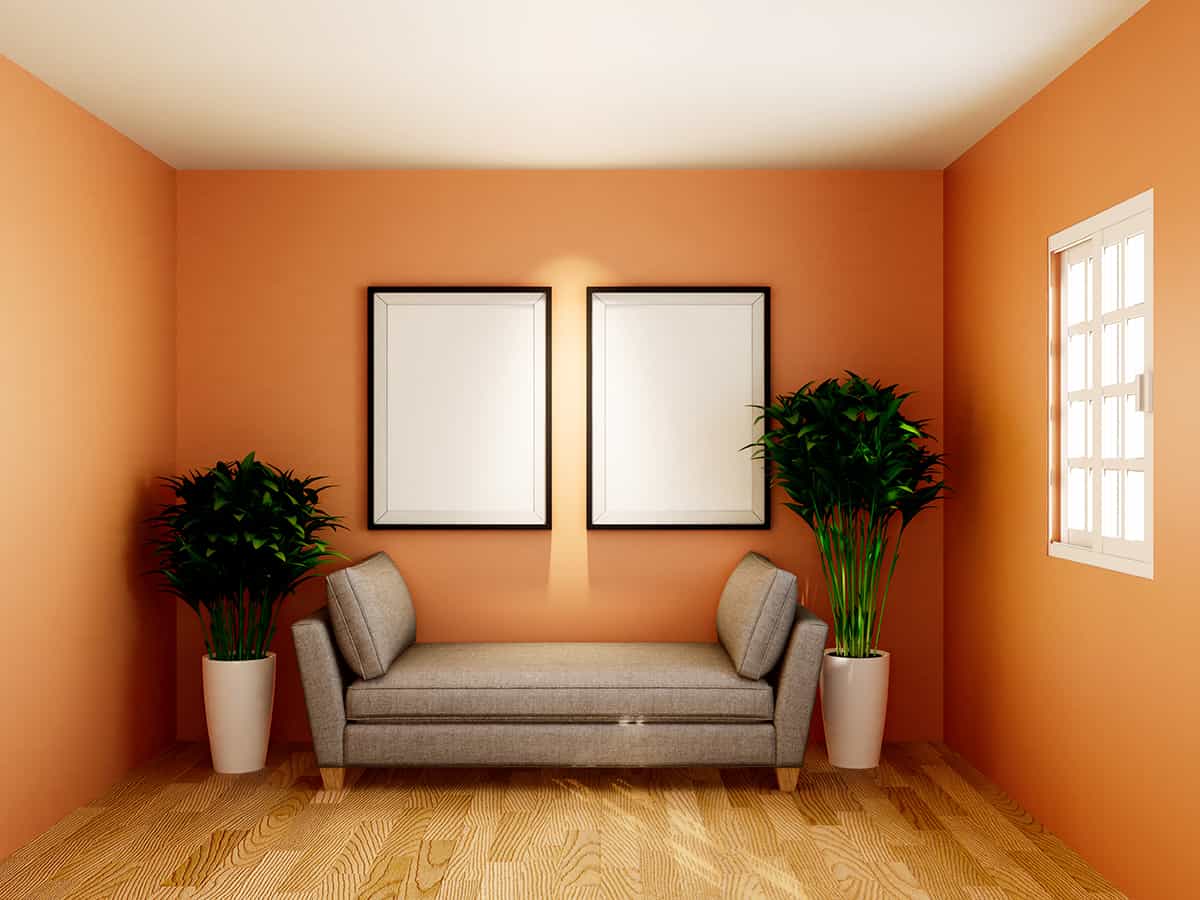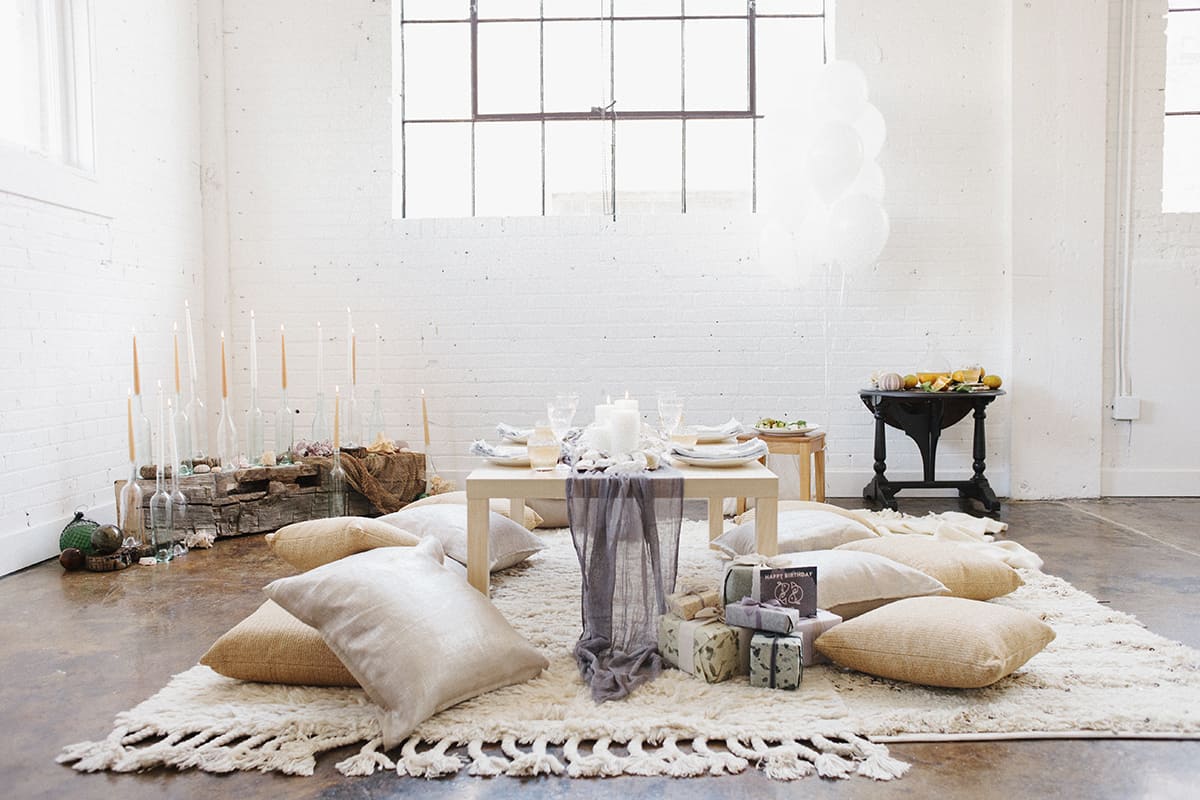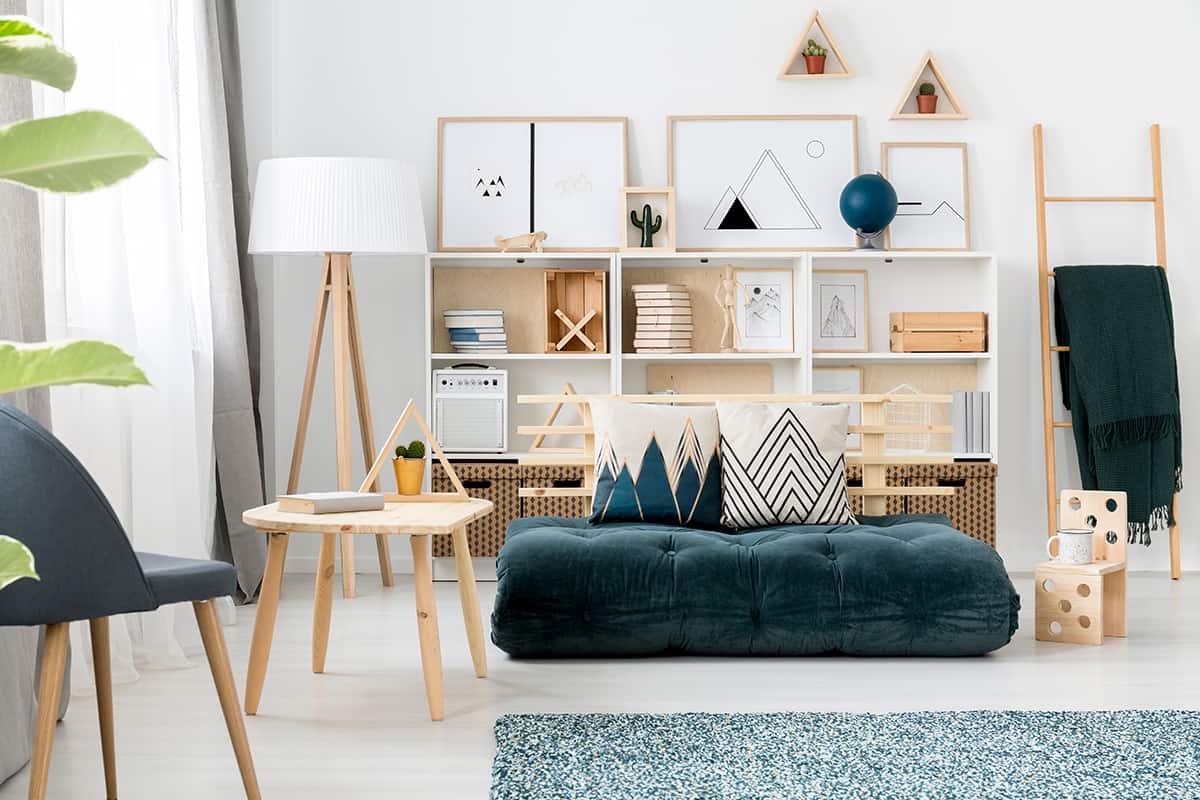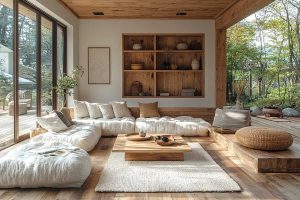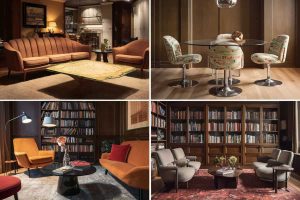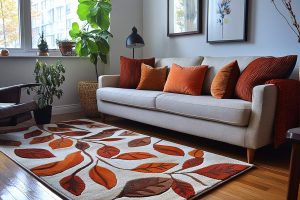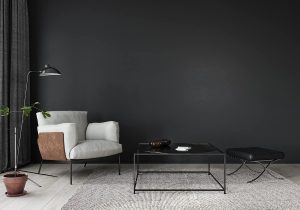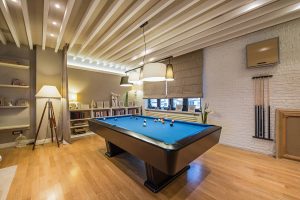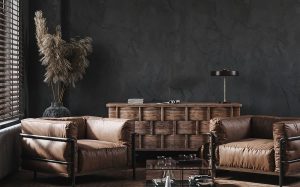If you were asked to name a piece of living room furniture, the first thing on most people’s lips would be a sofa. Sofas are synonymous with living rooms, and it’s rare that you see a living room without a sofa in it. A living room without a sofa is like a bedroom without a bed, right?
Well, actually, no. Sofas are not a required piece of furniture for a living room, and in many modern homes the sofa simply doesn’t work as well as alternative seating furniture. Here, we look at how you can set up a functional and comfortable living room without needing a sofa.
Goodbye, Sofa
If you are thinking about banishing sofas from your living room, you’re not alone. There are many reasons why people are increasingly deciding to eliminate this piece of furniture from their living rooms, including:
Cost
In most cases, sofas will be the most expensive item of furniture in a living room. When you’re first starting out in your own place, you may not be able to afford a good quality sofa, or you may simply prefer to spend thousands of dollars on something other than a wooden frame with some upholstered cushions.
Removing the idea that sofas are a necessary personal belonging can free up space, and free up a good chunk of money in your bank account.
Size
When it comes to buying or renting real estate, square footage comes at a premium. This is especially the case in city apartments, which are becoming increasingly smaller in order to accommodate more people.
If you are furnishing a studio apartment or you have a home with a tiny living room, the huge size of a sofa may not make sense for your space. Even compact sofas will take up a valuable amount of floor space, so it’s wise to consider alternative options.
Ease
If you move house frequently, or if you live in an apartment several stories up, then getting a sofa in and out of the property can present a serious problem. Pivot, anyone? In this case, it is simply easier to opt for less bulky furniture, which won’t be such a challenge to get up numerous flights of stairs.
Functionality
Many of us love nothing more than lounging on a big plush sofa, but if you are looking for a piece of furniture that can fulfill multiple functions, then a sofa isn’t going to cut it. There are other types of seating furniture that are multi-functional and can be a better use of your space and money.
Alternatives to Sofas
Chairs
Chairs can be used instead of sofas to maximize seating space but also to open up the possibility of different layouts and setups in the living room. Sofas cannot be easily moved, but chairs are much more portable.
You can position several chairs in a U-shape in front of the TV if you want to get together with friends and watch a movie, or you can set them up in a circle around a central table to play poker or socialize.
If your home lacks a dining area, chairs can also be pulled up to a fold-out table so that you have a place to entertain dinner guests. If you’re worried about comfort, remember that chairs don’t have to be basic. You can select a comfy upholstered wing-back chair or pile cushions on a wooden chair for a budget option.
Bench
A bench works well as an alternative to a sofa because it takes up considerably less space, but it can fulfill many of the same functions and more.
Move your bench against a wall and set cushions behind your back so that you can relax on the bench and watch TV in the same way that you would on a sofa, or pull the bench out and seat it next to a table so that it can be used for dining. Make a bench look relaxing by covering it in soft furnishings, such as a faux fur blanket or velvet throw pillows.
Chaise Lounge
A chaise lounge can work as a place to lay back and relax but also as a place to take a nap. These items of furniture are smaller in size and take up much less space than a sofa, but they will only accommodate one person at a time. If you live alone, then a chaise lounge could make good use of your space.
Day Bed
A day bed is a brilliant solution if your living room needs to double up as a guest bedroom. A day bed looks and acts just like a sofa when the cushions are set against the back and sides, but you can remove the cushions to reveal a full-size twin bed with a proper mattress.
This will be much more comfortable for guests than sleeping on the couch. You can also get fold-out or trundle day beds, which can be set up as a queen bed to accommodate more sleepers.
Floor Cushions
If you like a casual, bohemian interior style, then floor cushions are a great alternative to sofas. These can be easily moved to different living room areas to suit various situations, such as socializing, eating, or relaxing.
Floor cushions are inexpensive and easily transportable if you live in a high-rise building. They are also surprisingly comfortable, and they take up much less space than a sofa.
Futon
A futon, much like a daybed, can be used as a compact sofa or folded out into a bed. These pieces of furniture come in many different styles to suit different budgets. Opt for a high-end futon if you value quality and plan to be sleeping on it often, or choose a budget futon to cut costs.
Decorating with Sofa Alternatives
A sofa not only serves the purpose of providing a comfy seating spot in a living room, but it actually helps to make a living room look more welcoming and accommodating.
It does this because it is made with padding and soft textiles, and it is well-known that soft furnishings make a room feel more inviting. However, you can also achieve a comfortable living room without a sofa by cleverly using accessories.
Throw blankets
Throw blankets can make sofa or couch alternatives look much cozier. Choose plush blankets such as those knitted with chunky wool, or throws made from faux fur. Drape them over the backs of chairs or fold them over a bench seat to create a more comfortable vibe.
You can also fold up stacks of throw blankets and put them in a basket so that you always have one to hand to offer a guest to make them more comfortable on a wooden chair or a floor cushion.
Throw pillows
Pillows and cushions make a living room feel inviting without a sofa. These items create the sense that the room is still plush and comfortable, even though the seating options may have solid structures. A rocking chair will be instantly more appealing with a throw pillow placed against the back, and a daybed will look like a sofa when the back and sides are lined with cushions.
If you are utilizing a bench as your seating option, you should have a selection of cushions available so that when the bench is pushed against a wall, the wall will work as back support while also being comfortable because of the cushions.
Rugs
If you feel that your living room doesn’t look cozy enough without a sofa, then you need to maximize the amount of other soft furnishings in the space. The more soft furnishings there are in a room, the more comfortable the vibe will be. A rug is an excellent choice of soft furnishing to use in a living room because it can make a hard, cold floor feel instantly inviting.
This is especially the case if your living room flooring is hardwood or tile rather than carpet. Rugs can also be used to define different areas, so you can move your rug to a different part of the living room when you move your seating furniture, for example, to set up a temporary dining space or a cozy nook for game night.
Curtains
Like rugs, curtains are another type of soft furnishing that adds a cozy and welcoming feel to a room. They help to blur the hard edges of the walls and windows that are visible without curtains, and their soft fabric creates an appealing texture. Use heavy curtains to create a snug feeling in a living room or sheer drapes if you prefer a comfortable yet breezy interior style.
The fabric of the curtains can play a big part in making a room feel relaxing even without the use of a sofa, so consider plush textures such as velvet or suede for your living room drapes.
